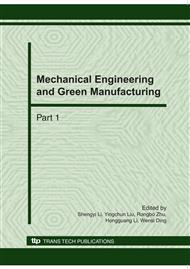p.153
p.157
p.162
p.167
p.172
p.177
p.181
p.186
p.192
Surface Analysis of Electrical Arc Residues in Fire Investigation
Abstract:
At most fire scenes, electric short circuit (ESC) arc beads that may be provide useful information on the cause and development of the fire are found. Various physical or chemical methods have been proposed for identifying these electric short circuit beads to be either the cause of a fire (primary arc beads) or one caused by the flames of the fire (secondary arc beads). Little was studied, however, on their identification using the cupreous oxides formed in the molten marks. In this study, the concentration of metallic Cu and Cu2O in the surface region and subsurface was quantified by X-ray photoelectron spectroscopy (XPS). As a result, it can be examined to distinguish the primary and secondary arc beads by comparing the distribution of the substances of Cu and Cu2O.
Info:
Periodical:
Pages:
172-176
Citation:
Online since:
October 2010
Authors:
Keywords:
Price:
Сopyright:
© 2010 Trans Tech Publications Ltd. All Rights Reserved
Share:
Citation:


